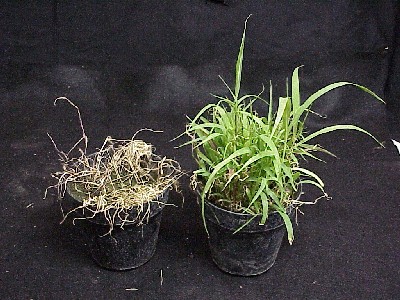Chapter 14: Applied Herbicide Physiology and Movement
14.2 Foundational Concepts
Herbicides kill plants by interfering with essential plant biochemical processes. The more rapidly these plant processes are taking place, the greater the negative effect on the plant if the process is impacted by a herbicide. An analogy would be that wearing a dust mask over your nose and mouth will restrict you more if you are running than if you are sitting in a chair, watching TV.
Plant biochemical processes are being carried out more rapidly in actively growing weeds and therefore actively growing weeds are more susceptible to most herbicides than are plants that are growing slowly. In general, poor environmental conditions (including moisture stress and low temperature) that reduce plant growth also reduce herbicide effects (Figure 2).

This herbicide interference may result in the starvation of the plant for essential compounds such as amino acids (i.e. glyphosate and other amino acid synthesis inhibitors) or in some cases results in the production of toxic compounds (i.e. free radicals produced by cell membrane disruptors). To recap discussion in the previous chapter regarding herbicide classification, herbicides function at a specific point in a biochemical pathway referred to as the ‘site of action’. We may apply herbicides to the soil in which plants are growing or directly onto the plant. In either case the herbicide must be absorbed by the plant and move to the site of action in sufficient quantity before an effect will be produced.